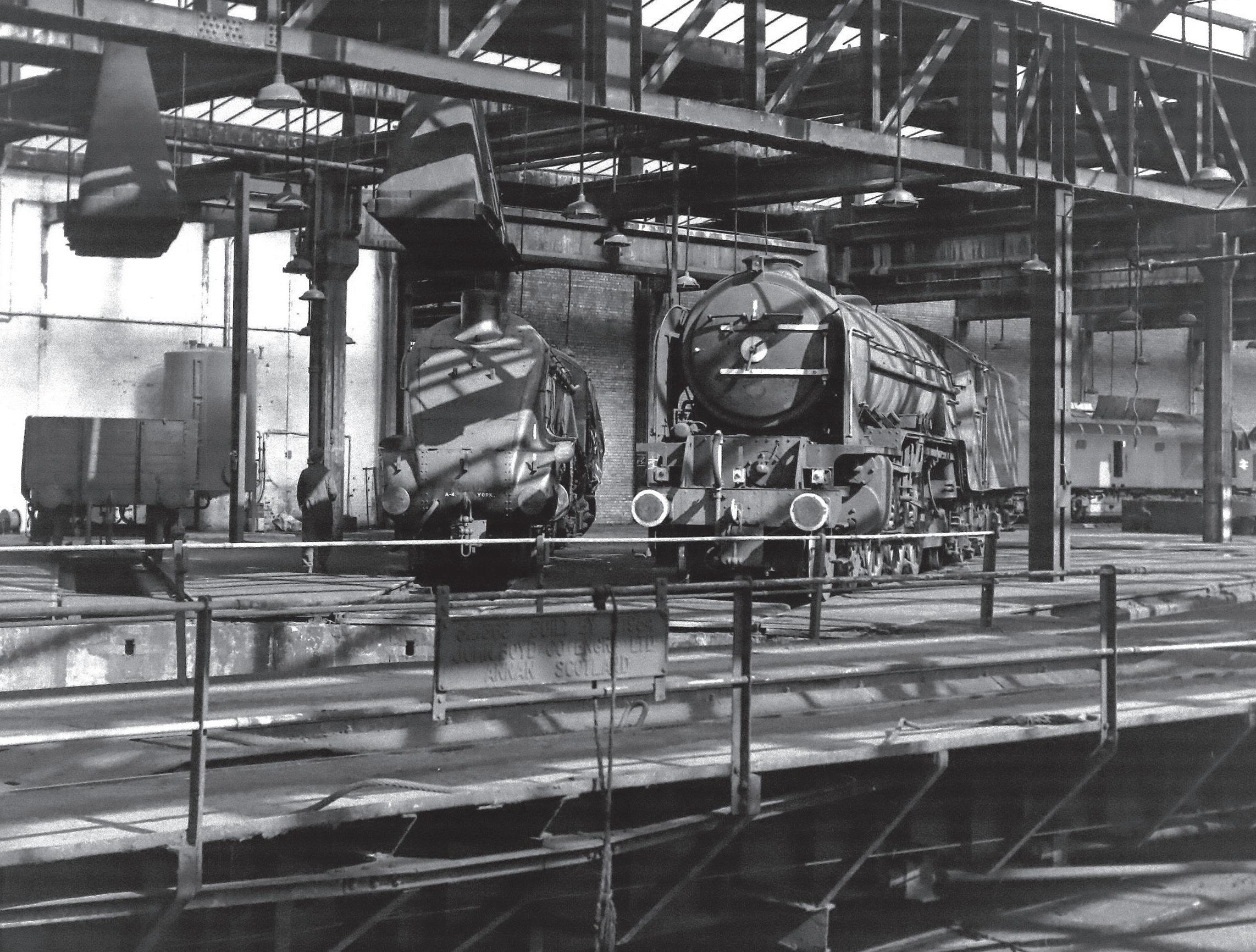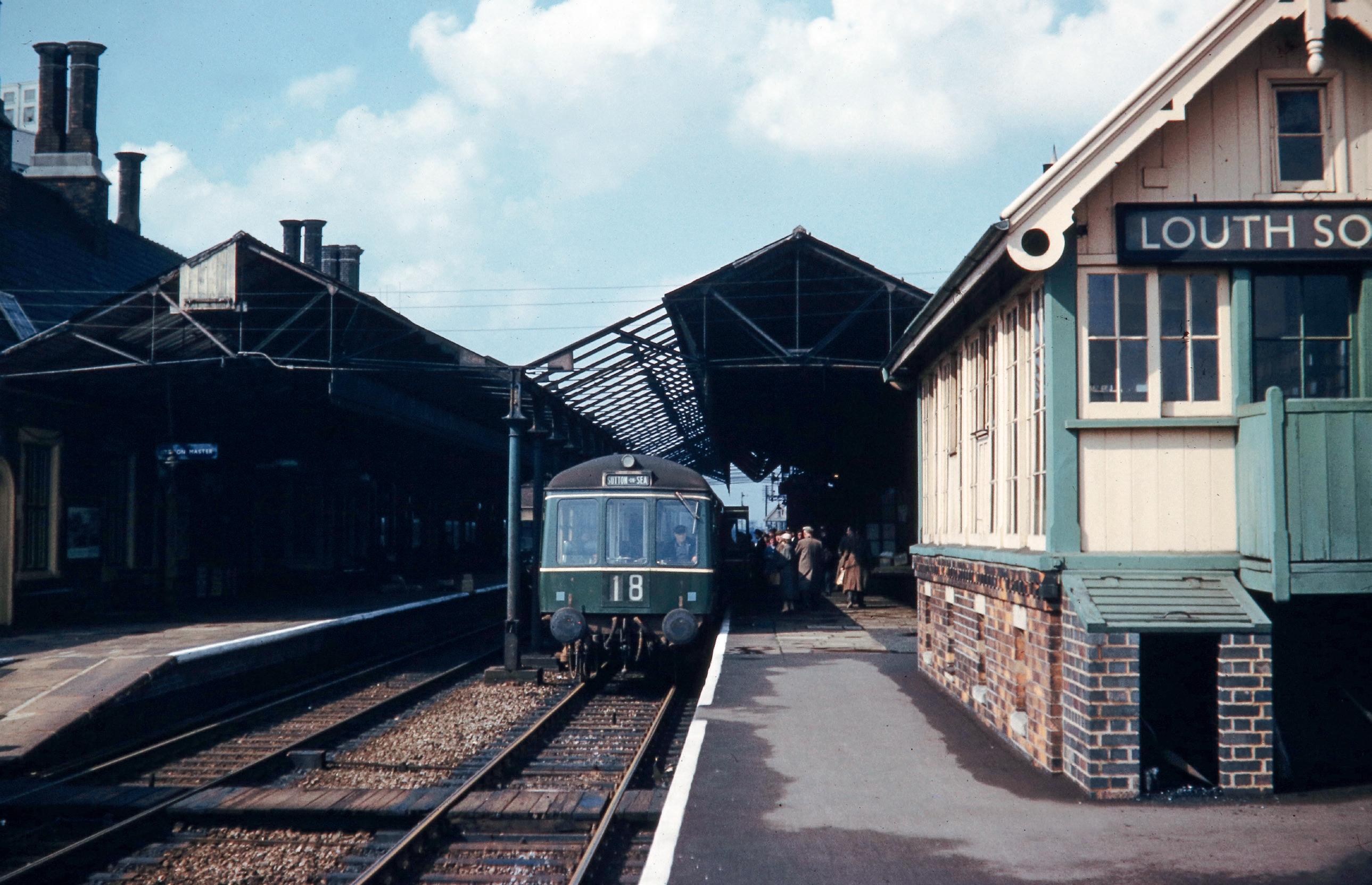
The new history periodical for students of the BR(E), BR(NE), LNER and pre-grouping constituents
ISSUE NO. 4 • JUNE 2024


The new history periodical for students of the BR(E), BR(NE), LNER and pre-grouping constituents
ISSUE NO. 4 • JUNE 2024

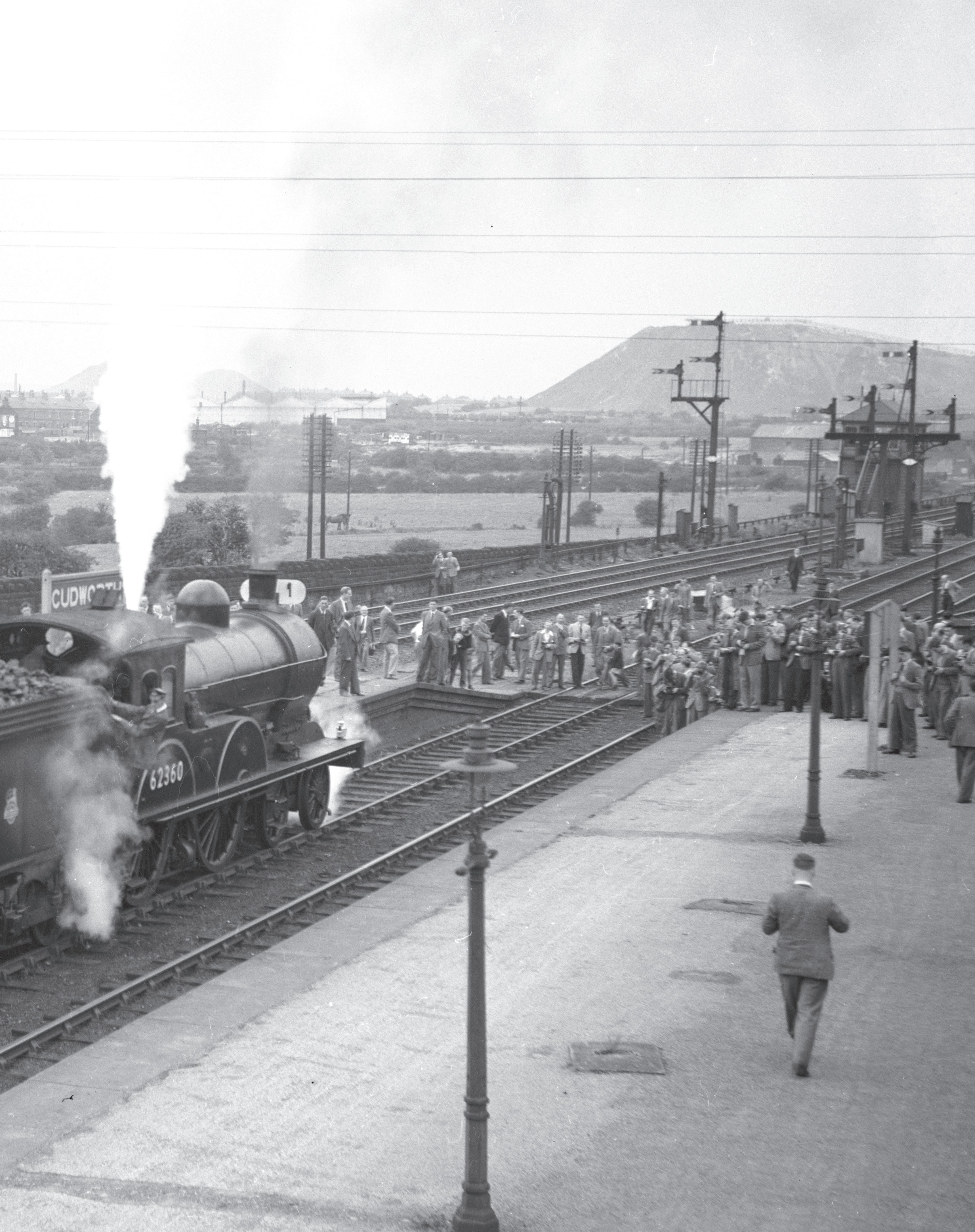
24th August 1952 • Class D20 4-4-0 No. 62360 at Cudworth station in the process of coupling onto the Hull & Barnsley Railtour, organised by the Stephenson Locomotive Society/Manchester Locomotive Society standing in the Down slow platform. The loco would work the tour over the Hull & Barnsley Railway to Hull Paragon and back to Cudworth. The three excursions would have reversed along this route onto the H&BR before heading forward to Cleethorpes. Photo: Boulter-Hancock, Paul King Collection
An observant reader of the 1938 Nottinghamshire edition of The King’s England would have noted that the modest inclusion of Colwick (pronounced locally as ‘Collick’) did not mention anything of the large concentration of railway yards known by that
name. The same reader may have also noted that Netherfield, the actual location of these yards to the south-east of Nottingham, did not deserve a single mention in the book probably because as a minor entity of Colwick it did not possess a similar weight of historical importance as its neighbour.

A superb 1932 portrait of one of the many Robinson-designed O4 2-8-0s which arrived at Colwick during the 1920s. This is ex-ROD No. 6624 built by the North British Loco Co. in August 1919 and purchased by the L.N.E.R. in August 1928 and classed as O4/3 because of the lack of tender scoop and having only a steam brake. With the Thompson regime calling for a standard heavy goods loco the numerous O4 series was deemed as being appropriate for development and rebuilds incorporating the standard 100A boiler, standard cylinders and Walschaerts valve gear were taken in hand from February 1944. Colwick-based No. 6624 was one such conversion/rebuild completed at Gorton between July and September 1944 and the loco reappeared transformed and reclassified as Class O1. In 1946 it was renumbered to 3867 and in 1949 (as BR No. 63867) it was then based at Annesley where it remained until withdrawn in November 1962. Photo: David P. Williams Colour Archive.

In Eastern Times issue 3, I wrote about the first year of my trainspotting logs in 1957 at my local station of Ilford, on the former GER main line from Liverpool Street between Stratford and Romford. Not a single diesel was noted, but 1958 was a different matter, as the first signs of the new motive power that was to lead to the elimination of steam within a few years made its entry onto the stage.
Indeed, a diesel was the first locomotive to be logged as I positioned myself in Mill Road, near the Ilford flyover, for the first time in 1958, on 28th March. It was D5503 on a Down Yarmouth express, from a class that was to become an integral part of my Ilford, Stratford and Liverpool Street trainspotting days over the next few years.
The Brush Traction-built Type 2 A1A-A1A was just two months old at the time, but I don’t recall regarding this interloper as the first toll of the death knell for steam. Rather I suspect my 14-year-old mind just regarded it an interesting addition to the variety of locomotives passing through Ilford, and left it to my more erudite trainspotting chums to realise the implications.
Even the appearance of D5501 hauling empty stock on the Up line didn’t ring any alarm bells, for in a stay of just 1½ hours my thirst for steam was quenched by a trio of B17s, comprising No. 61660 Hull City on an Up Clacton, No. 61631 Serlby Hall on a Down parcels train, and No. 61672 West Ham United running light, heading, according to my notes, to Goodmayes. Throw in now preserved ‘Brit’ No. 70013 Oliver Cromwell with an Up express from Sheringham, and all was well with my world. Others noted during this stay included B1 No. 61375 on a Clacton working and classmate No. 61232 with an Up
The young fireman of No. 68538 strides forward in June 1957 to activate the Stratford depot turntable while his driver watches the photographer. A Stratford locomotive for much, and possibly all, of its existence, the Class J69, which was logged on 24th June 1958 running light through Ilford, was built at Stratford in April 1892 and withdrawn in September 1961 after a service life with the GER, L.N.E.R. and BR of just a few months short of 70 years. The smokebox numberplate from the 0-6-0T survives and is in a private railwayana collection. Photo: Dr. Ian C. Allen © The Transport Treasury
Harwich express, and No. 64662, a GER J19 class 0-6-0 built at Stratford in 1918, on a Down freight. Mention too for another pre-Grouping built engine on freight duty, No. 69498, an N2 class 0-6-2T outshopped by Doncaster in 1921 and a member of a class more associated with Kings Cross suburban trains than the GER main line.
It was to be three months before I returned to my Mill Road perch, on 24th June, and by then the diesel revolution had gained extra momentum with the introduction of powerful Type 4 English Electric 1-Co-Co-1 locomotives that had announced their arrival by muscling in on ‘The Broadsman,’ previously the domain of Britannia Pacifics. On this day D204, barely run-in at just a month old, came through at 3.42pm on the Down working of this flagship express, and even the most one-eyed of we east of London trainspotters began to realise that a new order was taking over.
That message had already been relayed to us 25 minutes previously when D5504 was logged on an Up Yarmouth express, and was subsequently emphasised when D202 swept past on an Up Cromer train, soon followed by D5505 heading for Liverpool Street with a Yarmouth express.
Steam still had its part to play, even if it wasn’t centre stage, and during the afternoon I logged Britannia Nos. 70002 Geoffrey Chaucer, 70003 John Bunyan, 70010 Owen Glendower, and 70034 Thomas Hardy, and B17 No. 61662 Manchester United, all on Clacton trains, and two more B17s, No. 61612 Houghton Hall working a parcels train and No. 61649 Sheffield United on empty stock. There was also No. 61000 Springbok and No. 61233 on the Down and Up ‘Scandinavian’ respectively, so steam honour was partly satisfied.

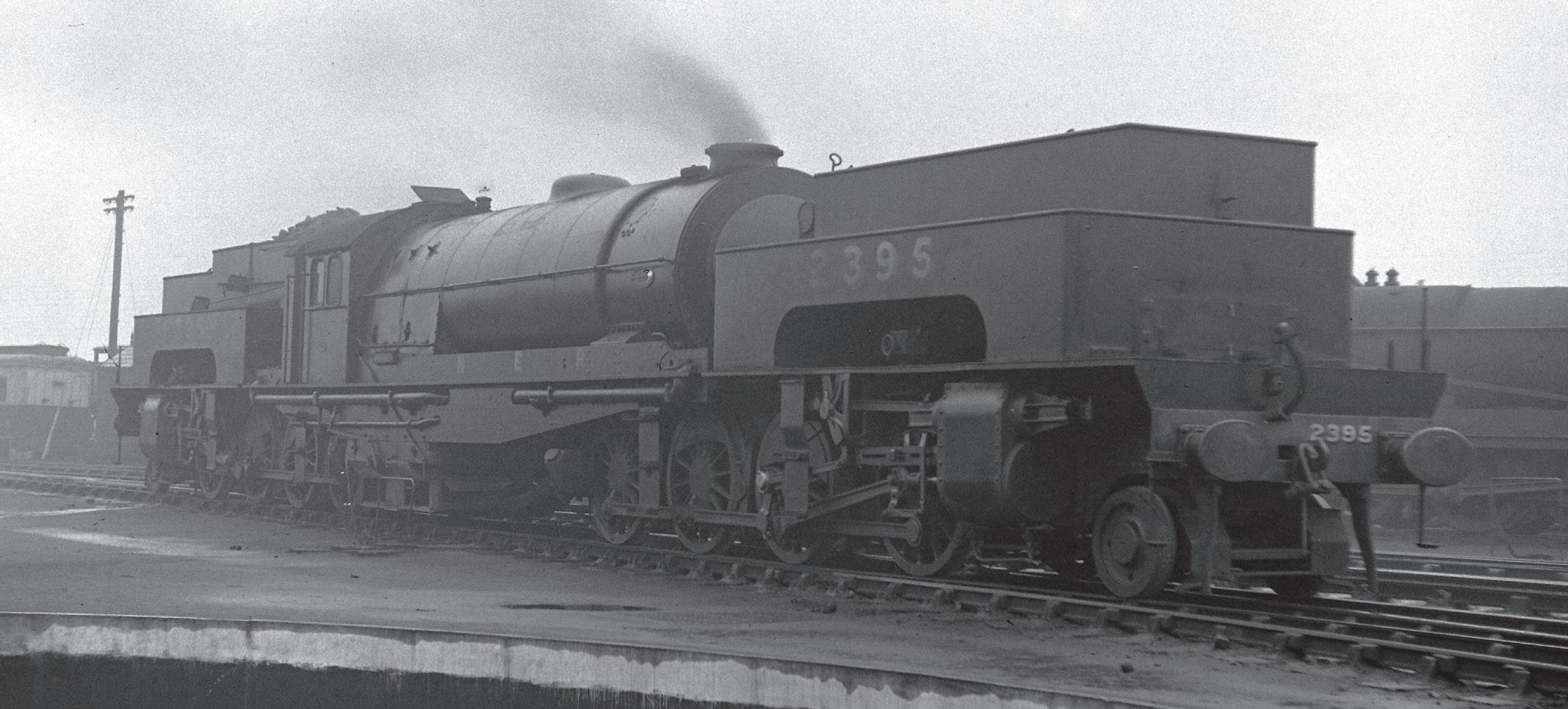
Picture the scene. A remote stretch of rail track in Kenya around 1960. The sun is beating down. A freight train approaches, at its head a steam locomotive, its outline blurred by the heathaze. Wait, are there two locomotives?
No, there’s only one. No… there appears to be something in between. As it nears, it pierces the haze and the mystery is revealed. It is an articulated Garratt, a red, East African Railways Class 59, with an awesome 4-8-2+2-8-4 wheel arrangement. This engine is No. 5928, named Mount Kilimanjaro. As it storms past, smoke billows and its safety valves roar from its superb boiler producing steam in abundance. A seemingly endless string of wagons and oil-tanks following in its wake, No. 5928 disappears back into the shimmering haze.
On the African continent, locomotives such as this once revelled in handling the heaviest loads. The type was named after its British creator Herbert W. Garratt, employed as an inspecting engineer by New South Wales Government Railways. Inspired by the carriages of railmounted military guns, Garratt patented his concept in 1907, subsequently approaching the engineering firm Beyer, Peacock & Company in Manchester to discuss production. This initiated a true rail icon, with the E.A.R.
Class 59 ultimately holding the honour as the world’s largest and most powerful working steam locomotive. Garratts were built in a vast array of track-gauges, sizes, weights, power ranges and wheel notations and operated by railways worldwide, including here in Britain.
To the Garratt design. While debatable, neither one locomotive nor two, the concept offers the advantages of both. Resembling two engines coupled, it is effectively just that with corresponding capability, while having a single boiler/firebox and only requiring one crew, is considerably less expensive to build and operate. The boiler/firebox and cab are set on a cradle-frame forming the middle section of three. This is supported by two ‘engine units’ incorporating the cylinders and running gear, one placed ahead of the smokebox and facing forwards, the second behind the cab and opposite facing. This makes for equally good running in either direction, eliminating the need for ‘turning’, which would be impractical on a standard turntable with a locomotive this length.
Vertical pivoted joints connect the engine units with the boiler section, enabling them to swing side-to-side in relation to it. This facilitates negotiation of curves and points, impossible were the engine of rigid construction. An added advantage is the stability from the main section
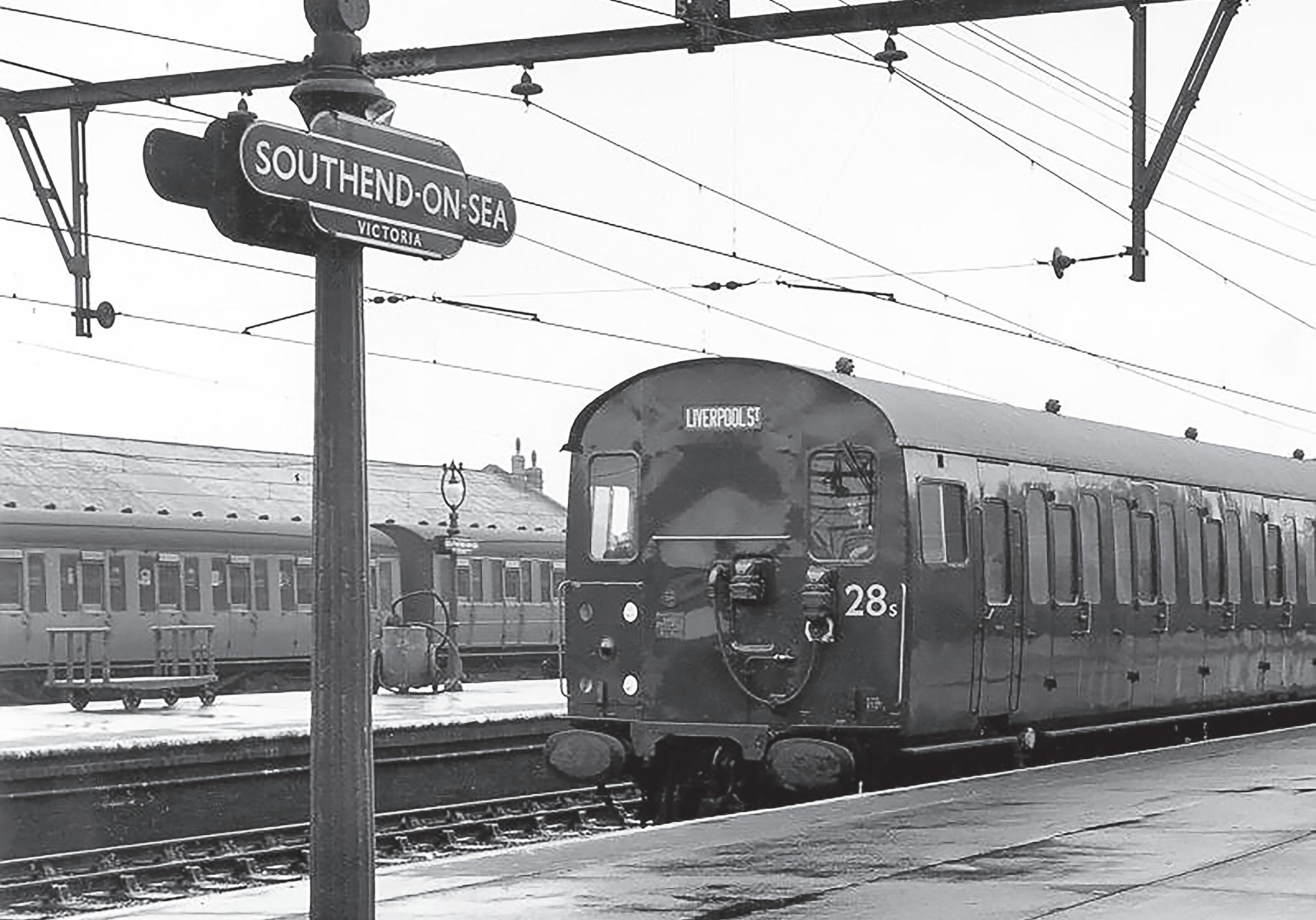
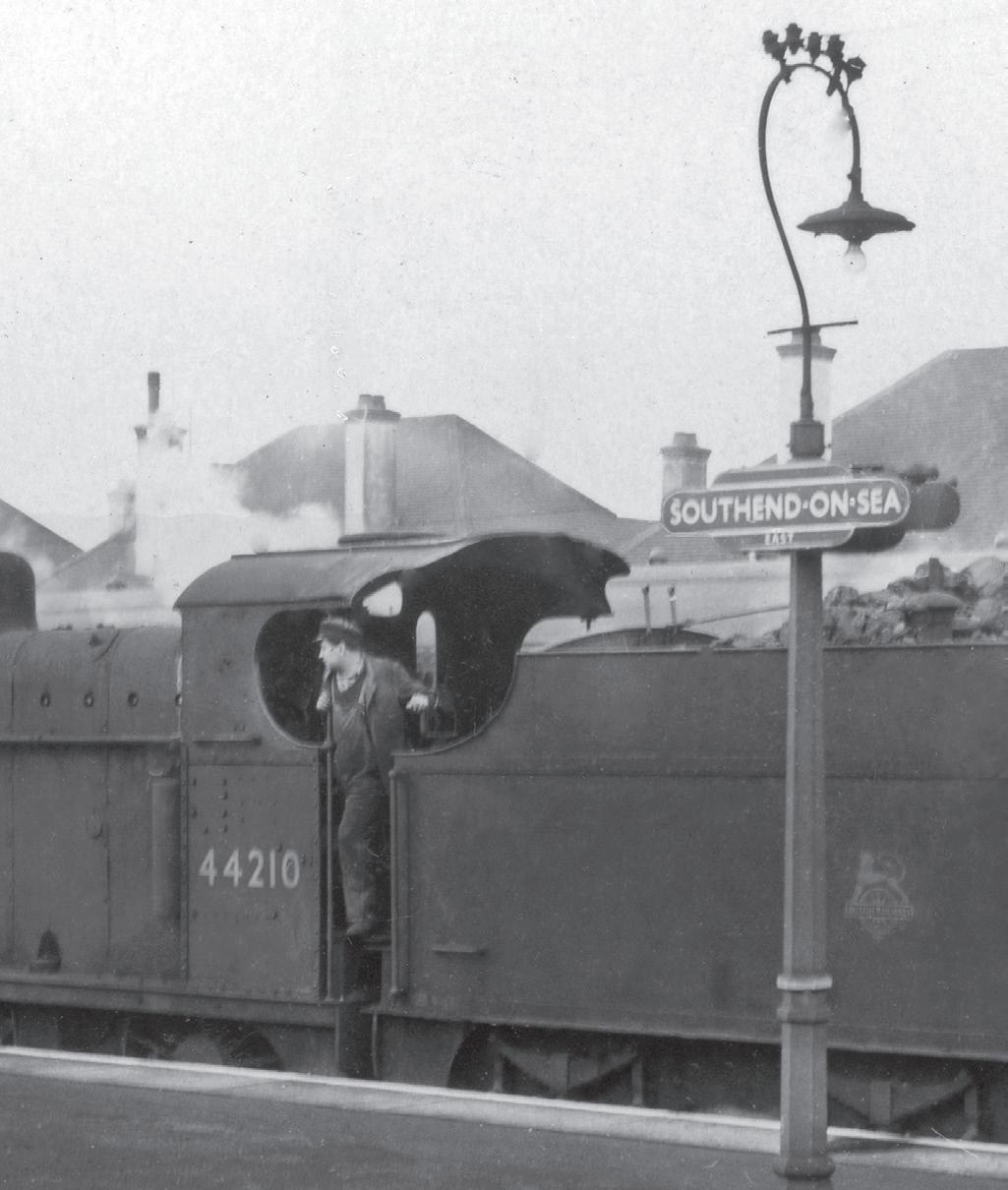

 Southend-on-Sea East
Southend-on-Sea East
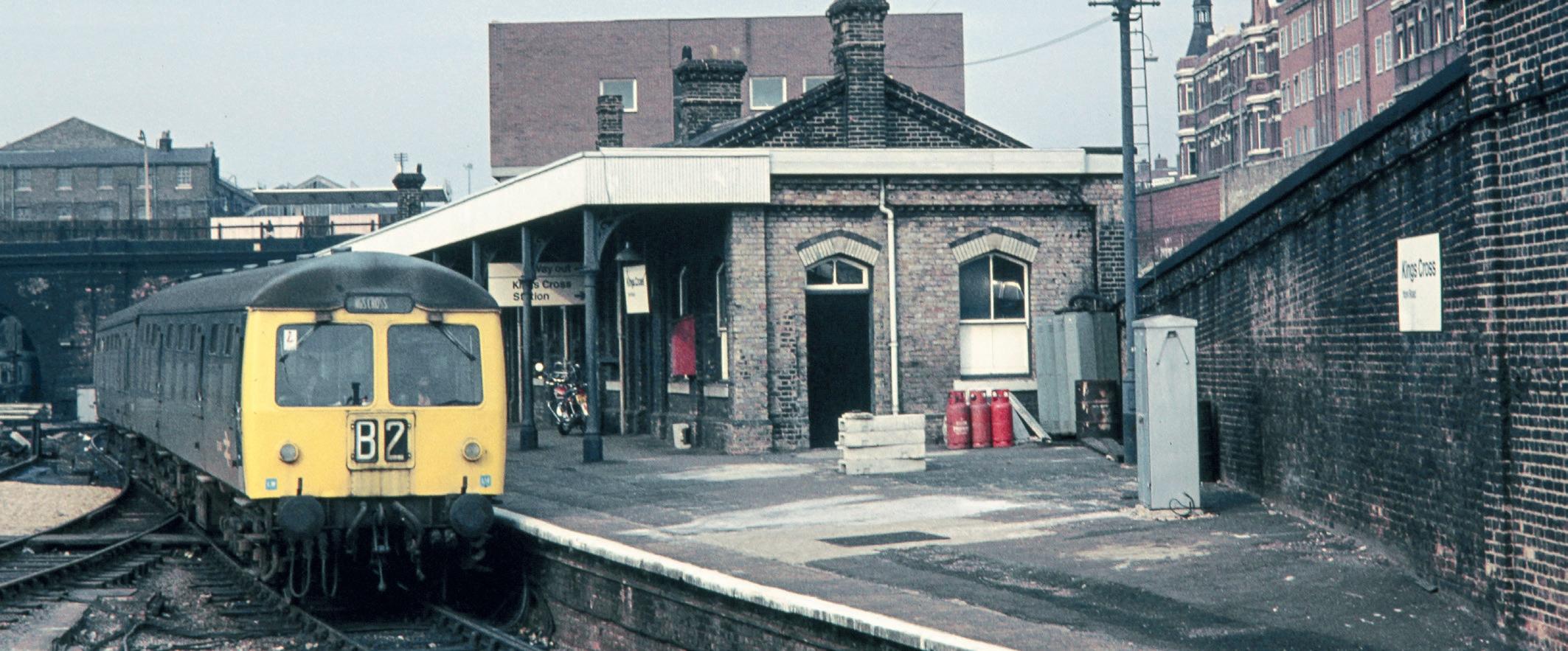
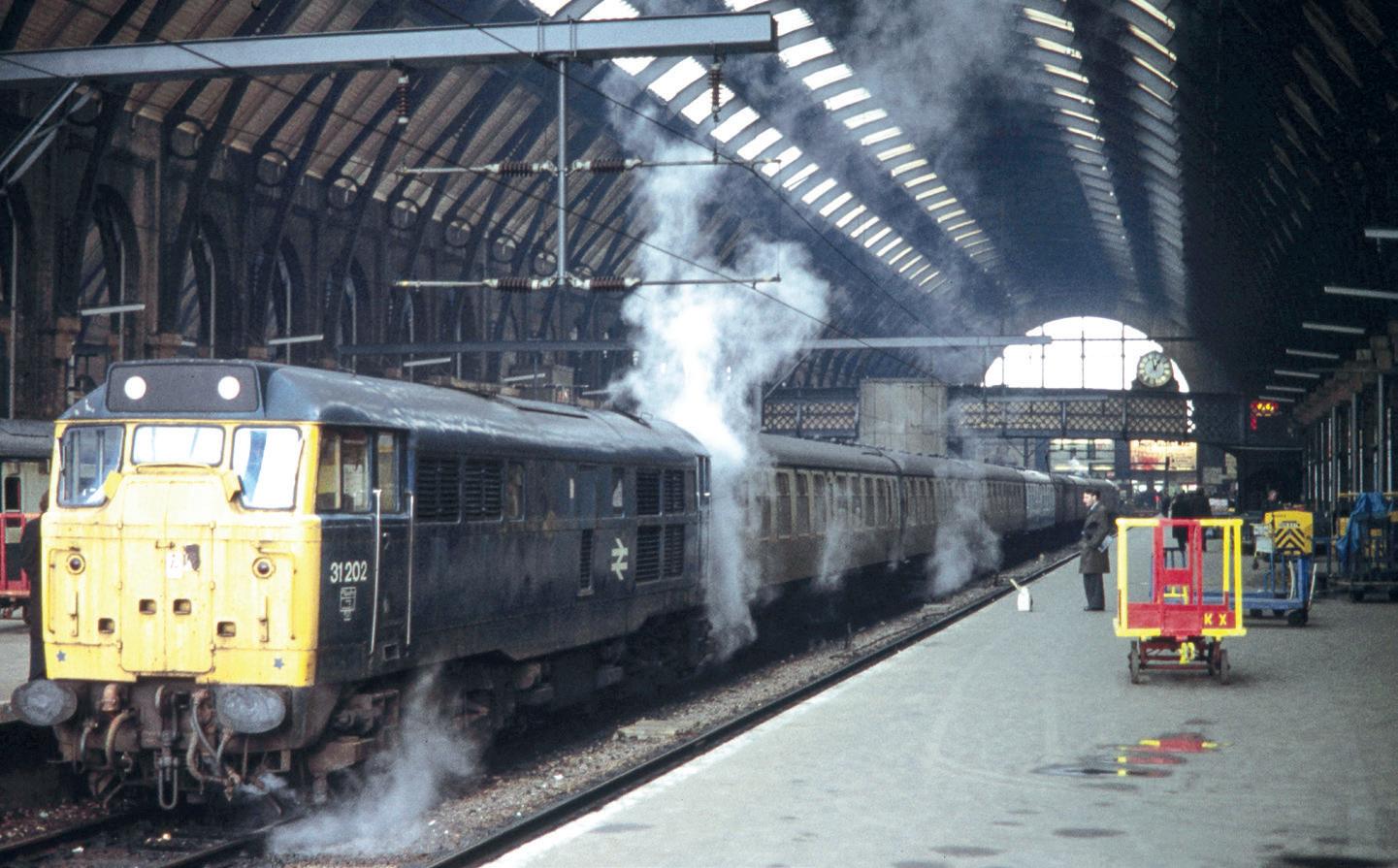

Above: 8th October 1975 •
An unidentified Cravens DMU has arrived at Kings Cross York Road with the 13.40 from Hertford North.
Photo: G. H. Taylor © Transport Treasury
Left: 3rd February 1978 • No. 31202 at Kings Cross with the 13.30 departure to Cambridge. There’s plenty of steam escaping from various coaches on what was a very chilly day.
Photo: G. H. Taylor © Transport Treasury
Left: 4th August 1980 • A stranger at Kings Cross stabled near the Power Box. No. 37072, at this time based in the north east at Thornaby depot, awaits its next duty. Kings Cross men were not trained on Class 37s so it would have been worked in by a visiting crew from one of either Peterborough, Doncaster, York or Newcastle (Gateshead) depots, who signed these locos.
Photo: © Roger Geach
